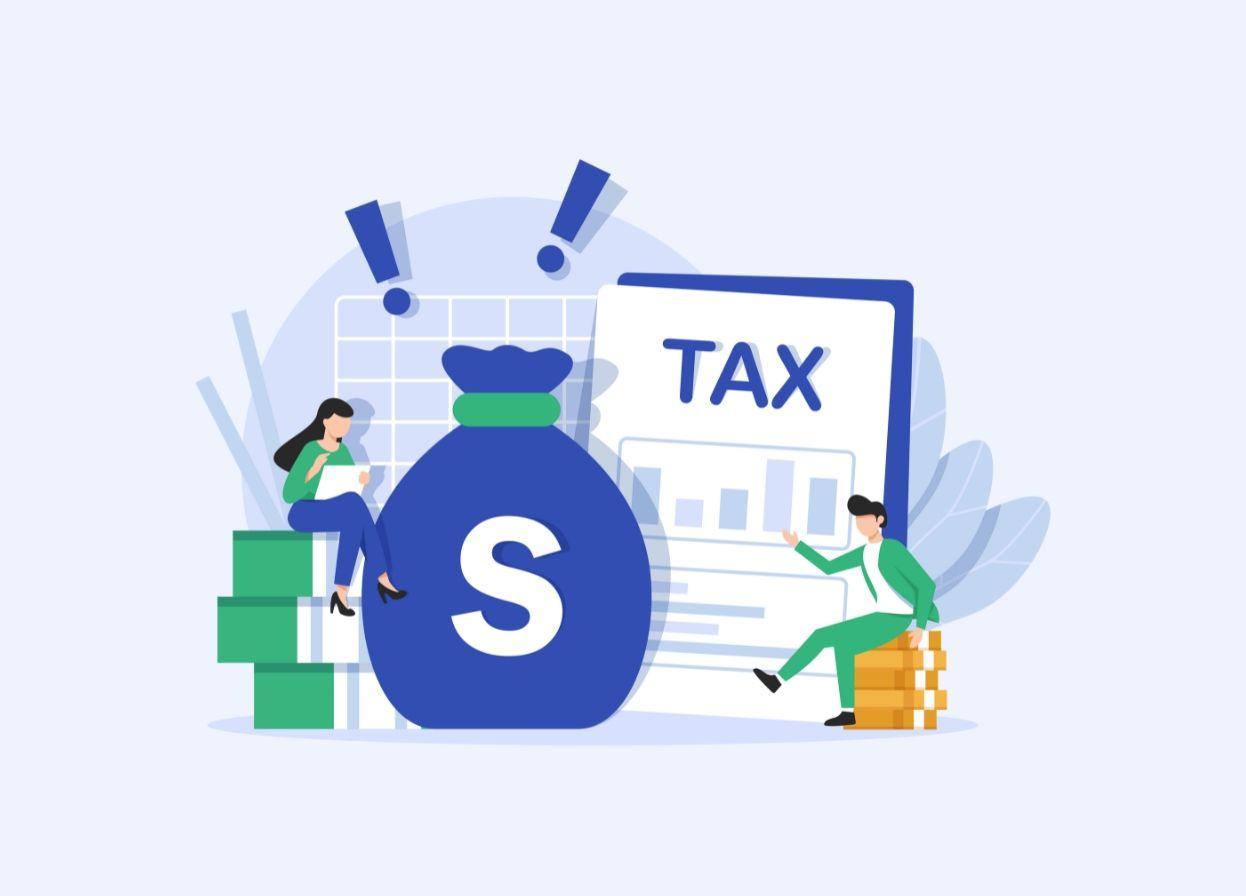Do you need to pay GST on Foreign Exchange? (2025 Guide)

Updated on: 27th November 2025
TL;DR
- Export service payments (inward remittance) are usually zero-rated (no GST on the invoice) if export-of-service conditions are met—you still report it in returns.
- Currency conversion (USD→INR etc.) attracts 18% GST, but only on the forex service value, not on the entire converted amount.
- That “service value” is calculated under Rule 32 using either (a) RBI rate vs dealer rate difference, or (b) the slab method (the slabs you listed).
- For GST valuation exchange-rate logic, Rule 34 references RBI’s reference rate for the relevant “time of supply” context.
- FIRC/BRC issuance fees (or any bank compliance-document fee) generally have 18% GST on the fee.
- Platforms like Skydo charge GST on the platform/service fee (not on your full remittance value)
GST on International Transactions: Overview
For Indian freelancers and businesses, payments from foreign clients are usually not subject to GST. That’s because most exports of services qualify as zero-rated supplies under GST. Zero-rated means you don’t charge GST to your overseas client, but you can still claim Input Tax Credit (ITC) on the GST paid for your business expenses, like software, equipment, or rent.
To qualify as an export of service, five conditions must be met:
- The supplier is in India
- The recipient is outside India
- The place of supply is outside India
- Payment is received in convertible foreign currency
- Supplier and recipient are not merely branches of the same company
Note that, this blog covers only cross-border service exports, not personal remittances or imports, which are treated differently under GST.
GST on Inward Remittances (Export Service Payments)
If you're an Indian freelancer or business receiving payments from foreign clients for services, you don’t charge GST on those invoices. These are considered zero-rated exports under GST as per Section 16 of IGST Act, meaning no GST is applied, but you're still eligible to claim Input Tax Credit. For example, if you build websites and get paid $1,000 from a US client, you simply raise an invoice without GST.
To support this classification, you’ll need proof of foreign inward remittance, such as a FIRC (Foreign Inward Remittance Certificate) or bank advice. These documents show that the payment was received in foreign currency and help validate your export status during audits.
If you're a registered business, it’s advisable to submit a Letter of Undertaking (LUT) to export without paying GST. If you don’t furnish an LUT, you'll need to pay GST upfront on the export invoice and later claim a refund from the government.
Either way, keep proper documentation to support your zero-rated export claims and stay audit-ready.
GST on Foreign Currency Conversion (Forex Services)
Whenever you convert foreign currency to INR (or vice versa), banks and forex providers charge 18% GST, but only on the service fee charged by your bank or forex dealer. This fee is considered a “value of supply” and is taxed at 18% GST.
But here’s the part many people find confusing: the service value isn’t fixed; it’s calculated using a slab system set by the government.
Here's how it works:
- For conversions up to ₹1,00,000: 1% of the amount is considered the service value (minimum ₹250). So, if you convert ₹50,000, the service value is ₹500 and GST is ₹90 (18% of ₹500).
- From ₹1,00,001 to ₹10,00,000: The service value is ₹1,000 plus 0.5% of the amount exceeding ₹1 lakh. So for ₹2,00,000: → Extra amount = ₹1L → 0.5% = ₹500 → Total service value = ₹1,500 → GST = ₹270
- Above ₹10,00,000:
The service value is ₹5,500 + 0.1% of the amount exceeding ₹10 lakh.
Example: For ₹20,00,000:
→ Extra = ₹10L → 0.1% = ₹1,000
→ Service value = ₹6,500 → GST = ₹1,170
(Note: This is capped, max GST payable is ₹10,800, even if your GST payable exceeds 10,800)
So even though the GST rate is 18%, in most real-world cases, the effective tax comes out to a very small percentage of the converted amount. This helps ease the burden on exporters and freelancers converting foreign payments.
Also note: This GST only applies to retail customers. Inter-bank forex transactions (say, between banks or authorised dealers) are exempt.
How Much GST Does Skydo Charge on International Payments?
Skydo charges 18% GST on its flat service fee, not on the full amount of your international payment.
For example, if you receive $10,000, Skydo’s fee is $29. The applicable GST would be 18% of $29, which comes to around $5.22.
This makes the GST impact predictable and transparent; you’re only paying tax on the actual service, not on the full remittance amount.
GST on Compliance Services like FIRC & BRC
When you receive foreign payments for services, your bank often issues two important documents:
- FIRC (Foreign Inward Remittance Certificate) – proof that foreign money came into your account
- BRC (Bank Realization Certificate) – proof that export proceeds were realised in India
Banks usually charge a small fee for issuing these certificates, and 18% GST is added to that fee, since it's treated as a domestic service.
In most cases, this GST is either built into the bank’s invoice or handled via the reverse charge mechanism, meaning the foreign payer (your client) is technically liable, but you don’t need to worry about collecting GST from them.
You just pay the fee to your bank, and the GST part is already taken care of.
✅ Bonus: Skydo provides FIRA instantly and for free with every payment, saving you both time and money on compliance.
Managing GST on Foreign Transactions: Best Practices
If you're receiving payments from abroad, a few GST best practices can help you stay compliant and avoid surprises:
- Use RBI-Authorised Channels: Always convert foreign currency through RBI-authorised banks or platforms. These channels apply the correct GST slabs and provide GST-inclusive invoices — helpful if you’re eligible to claim input tax credit.
- Mark Export Invoices Clearly: When invoicing foreign clients, add a note like “Export of Service – GST not applicable (Zero-rated under IGST)”. If your platform (like Skydo) charges service fees with GST, ensure that’s shown separately. This makes compliance easier and avoids confusion.
- Maintain Proper Documentation: Keep your FIRCs, BRCs, and any bank advice documents; they’re proof that your payments qualify as exports. These are useful during GST filings or if you ever claim input credit or refunds.
- Stay Updated: GST rules on export of services have been consistent since 2017, but it’s always good to stay informed about any changes, especially those affecting forex services or compliance documents.
How to file GST for international income in India?
As we've seen, as an Indian business providing services to clients outside India, your international income is classified as an export of services under GST law. Exports are considered zero-rated supplies, meaning they are taxed at 0%, but must still be reported in your GST returns.
Here’s how to file GST for international income:
1. Ensure you have an active GSTIN
You must be registered under GST to report and claim benefits on export income.
2. Raise GST-compliant invoices
Invoices for exports should mention:
- “Export of services with payment of IGST” or “Export of services without payment of IGST”
- Your GSTIN and the recipient’s billing address outside India
- Currency and conversion rate per RBI reference
3. Choose your export route: with or without payment of IGST
- Without payment of IGST: File a Letter of Undertaking (LUT) annually. No GST is charged on the invoice, and you can claim input tax credit (ITC).
- With payment of IGST: Pay IGST on your export invoice, then claim a refund of the tax paid.
4. File monthly/quarterly GST returns
Report your export income in GSTR-1 (Table 6A) and GSTR-3B. If claiming refunds, file RFD-01 after submitting relevant documentation.
5. Maintain documentation
Keep records like invoices, FIRA/eBRC, LUT, and shipping bills (for goods), as required by law.
💡 Important: Just because exports are zero-rated doesn’t mean you can skip GST filings. Regular filings ensure you stay compliant and unlock refund claims on input taxes.
Summing Up
For Indian freelancers and businesses, receiving payments from foreign clients is largely GST-free, thanks to zero-rated export rules. The only GST you usually pay is on forex conversion or compliance services like FIRC, and even then, it’s a small cost.
As long as you use authorised channels, maintain proper records, and stay updated on GST rules, you can manage your global payments confidently and compliantly.
Skydo helps simplify this even further, with live forex rates, clear service fees, and instant access to FIRA.
Learn more or sign up to streamline your international payments.
Is GST applicable on international transactions (foreign payments)?
Generally, no. International payments for export of goods or services are exempt from GST in India, as they are treated as zero-rated supplies. This means you don’t pay GST on money received from foreign clients as long as it’s in foreign currency and other export conditions are met.
Do I need to charge GST to my foreign clients?
How is GST calculated on foreign currency conversion?
Are services like PayPal or Wise transfers subject to GST?












